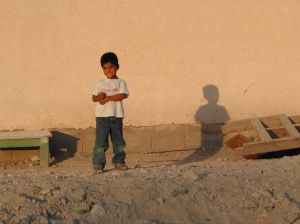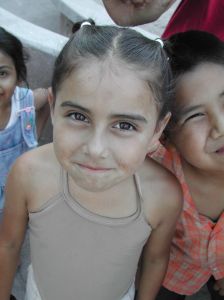 When a child has lived life in an orphanage or institution, the child has no real understanding of what family means. Children live a daily routine and most children in orphanages or institutions have no reference point for what family really means.
When a child has lived life in an orphanage or institution, the child has no real understanding of what family means. Children live a daily routine and most children in orphanages or institutions have no reference point for what family really means.
One day the child is introduction to these people who are their new Mom and Dad. Anything the child has been told, about adoption, made no sense to them at the time. Cognitively, most children don’t understand they are getting a new family until the child finds themselves in the middle of transition. Don’t be surprised if your child doesn’t react to you the way you dreamed. Don’t take it personally. It takes time to fall in love and it takes time to become a family and learn how to interact with each others personalities, temperaments, and meet each others needs.
Orphanage or Institutional life requires different skills than family life. The survival skills for life in an orphanage or institution may be “dysfunctional” for family life or American social, and school systems. Remember these key things when adopting a child who is leaving an orphanage or institution:
- Life in institutions are based on submissive and dominance models. Your child may seem too aggressive or too passive at first.
- Children who have learned to be self-sufficient for survival, or became a caretaker for younger children in the institution, will find it more difficult to allow you be the parent.
- Orphanages and Institutions have an extremely scheduled life. Everything is a routine and this lifestyle does not equip children with skills to handle some of the normal family life transitions.
- In orphanages and institutions, everything is outer regulated. Children are told when to sleep, when to eat, when to go to the bathroom. Children don’t have opportunities to learn self regulation or deal with choices.
- There were changes in life which a child had no control over. Children experience changes in staff, shifts or personnel changes. A child may or may not know the caregiver well. Children have no control over the room they live in. Because of gender and age children are grouped and bond with each other. Often, the only control the children have is over each other. This environment can create control issues and lags in developing trust in their new family situation.
- Living with multiple caregivers may result in indiscriminate friendliness with other important people and adults. This is not the same as attachment disorder this is due to the fact children in orphanages and institutions see all adults as important, equal and in charge.
- The children living in orphanages or institutions may not be used to having things of their own. Or they will have learned to keep their things packed tight in backpacks or bags. It will take time for a child to understand concepts of personal property and personal space and privacy.
 Your child may be coming home at nine months, 28 months, or eight-years-old. You will have to teach your child how to be in a family, and how to have social relationships. Leaving the structure and routine of an orphanage or instantiation is a huge transition for a child. Everything-–smells, foods, sounds, textures, language, faces–is changed and different from what your child is used to about living life. Go slowly introducing your child to new things and their new life.
Your child may be coming home at nine months, 28 months, or eight-years-old. You will have to teach your child how to be in a family, and how to have social relationships. Leaving the structure and routine of an orphanage or instantiation is a huge transition for a child. Everything-–smells, foods, sounds, textures, language, faces–is changed and different from what your child is used to about living life. Go slowly introducing your child to new things and their new life.
For more information about Transitions:
- Getting Ready For Your Child’s Arrival
- Adoptive Parents WAIT!
- Transition is All About the Baby or Child
- Starting you Child’s LifeBook
- Planning For Transition
- When Travel Is Required
- Transition of Siblings Anna’s Story
- From Foster to Forever in the Some Home
- Toddler Transitions
Photo credits for this article:  Photo’s by: Evan Earwicker notice of use and credit given)
Photo’s by: Evan Earwicker notice of use and credit given)
![]() Special Needs and Adoption-Related Terms:
Special Needs and Adoption-Related Terms:
A | B | C | D | E-F | G-H-I | J-K-L | M | N-O | P | Q-R | S | T-U-V-W-X-Y-Z
For more information about parenting special needs children you might want to visit the Families.com Special Needs Blog and the Mental Health Blog. Or visit my personal website.

